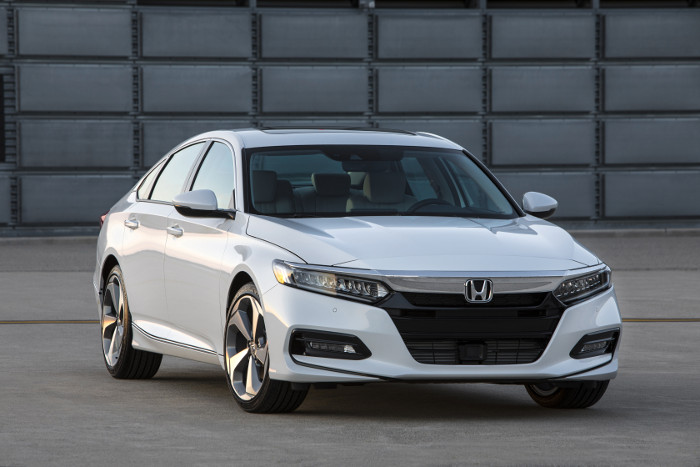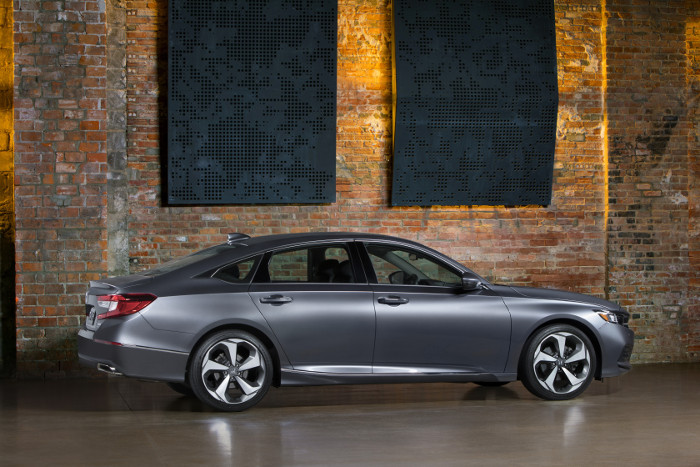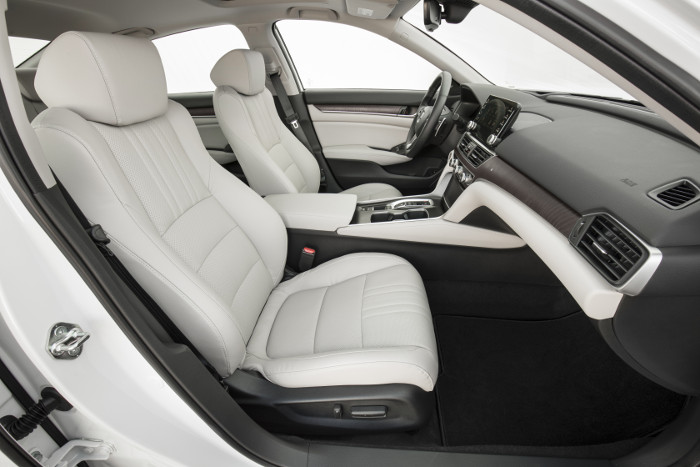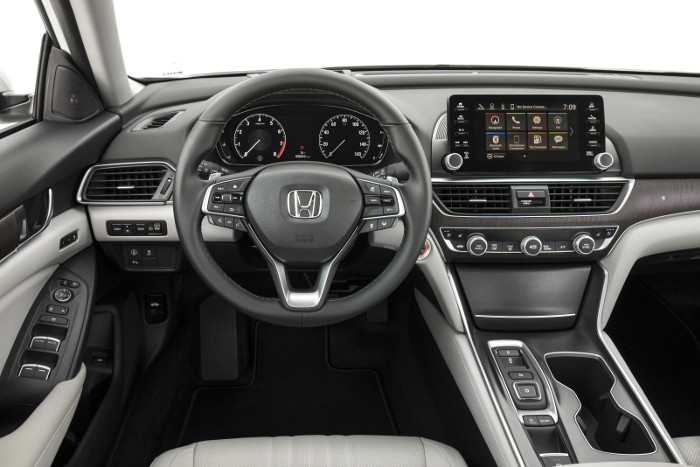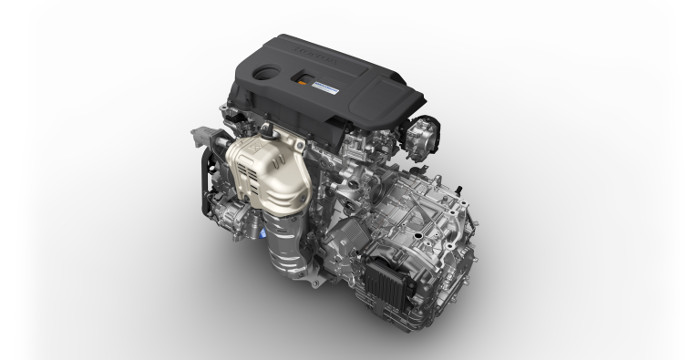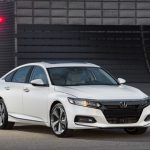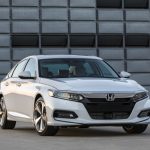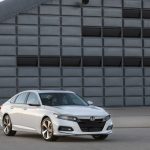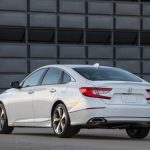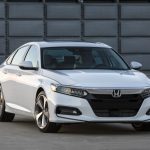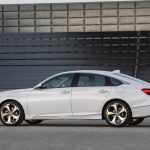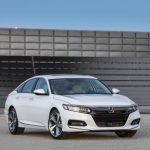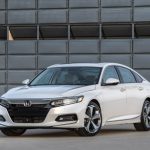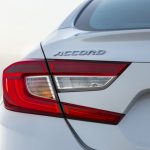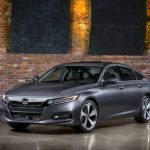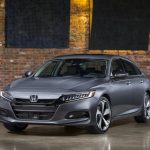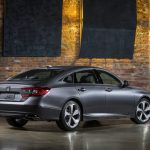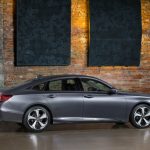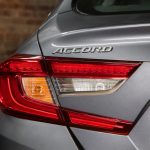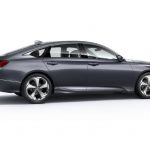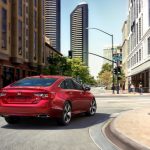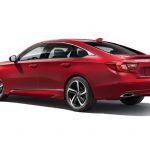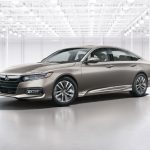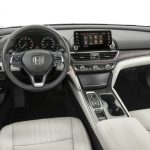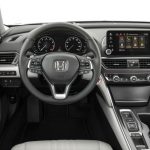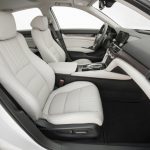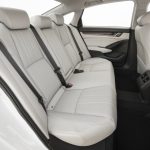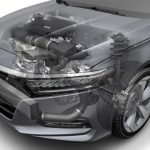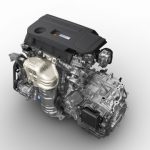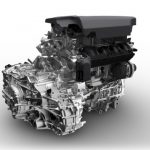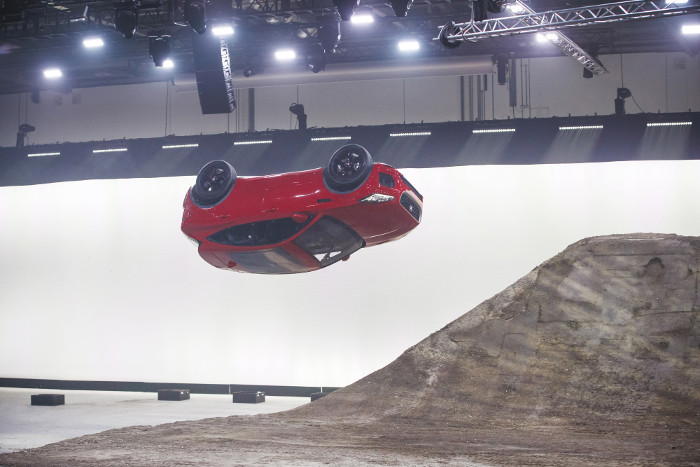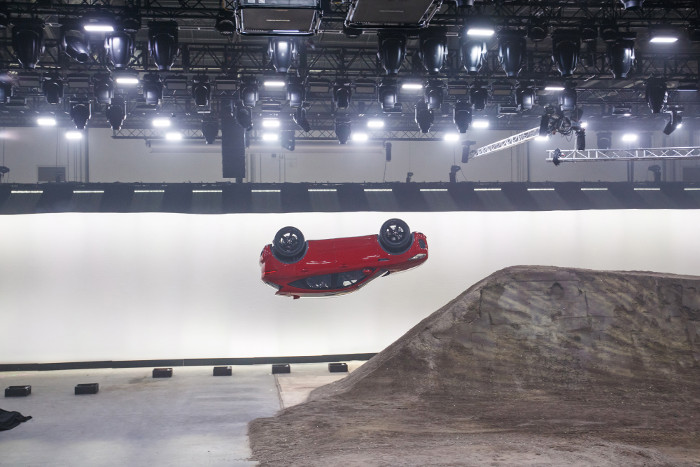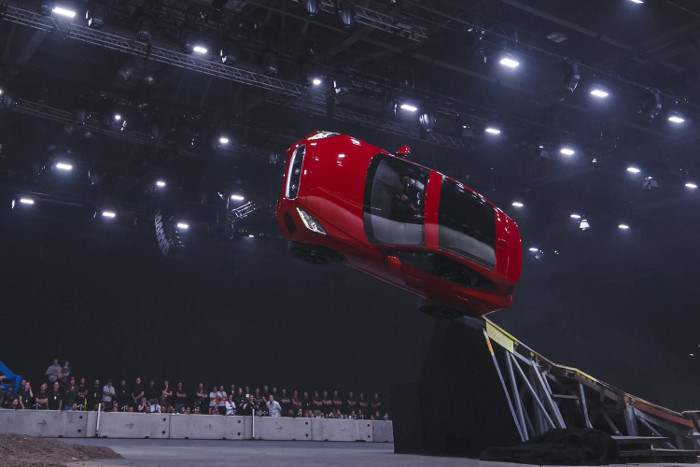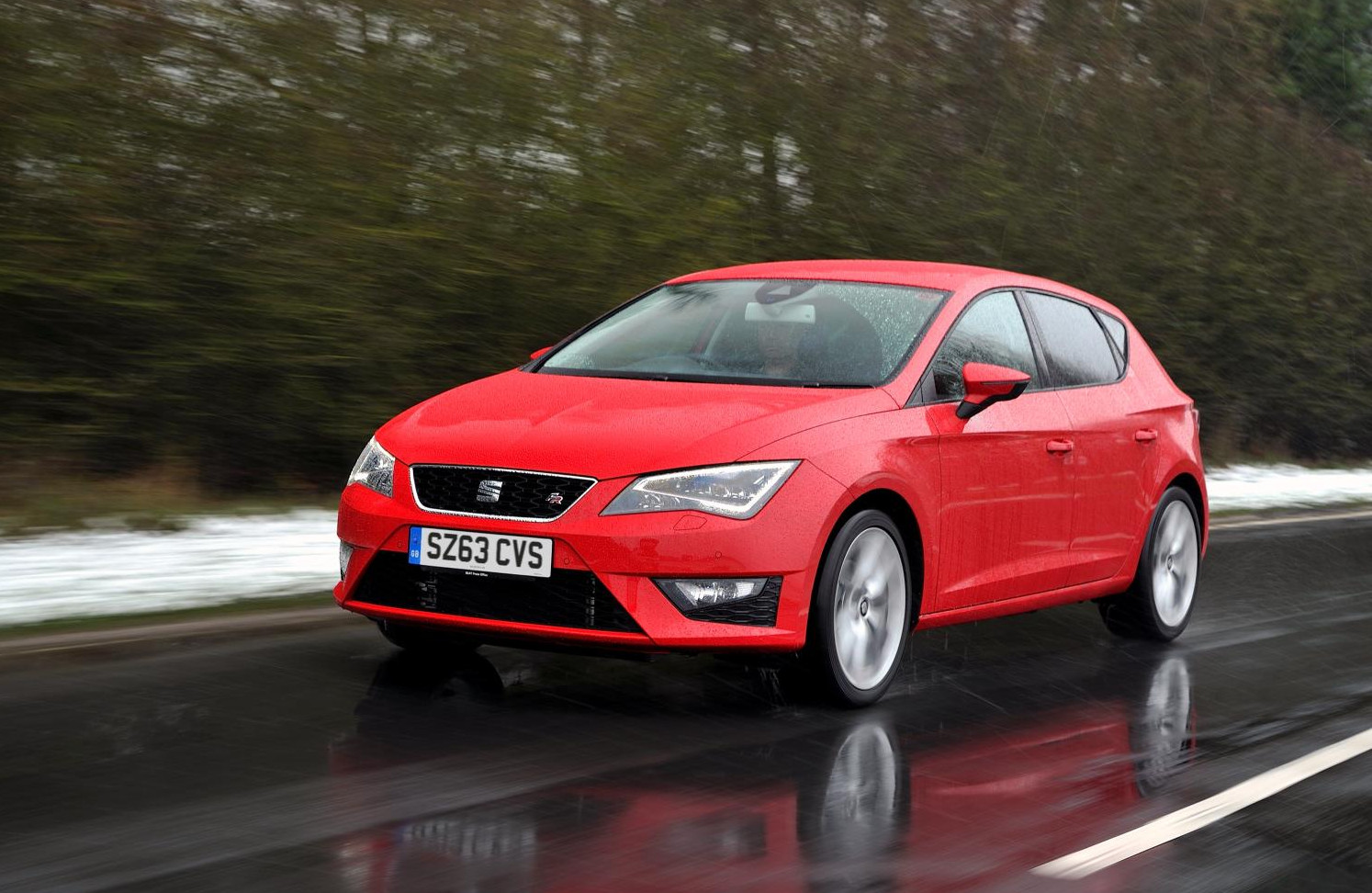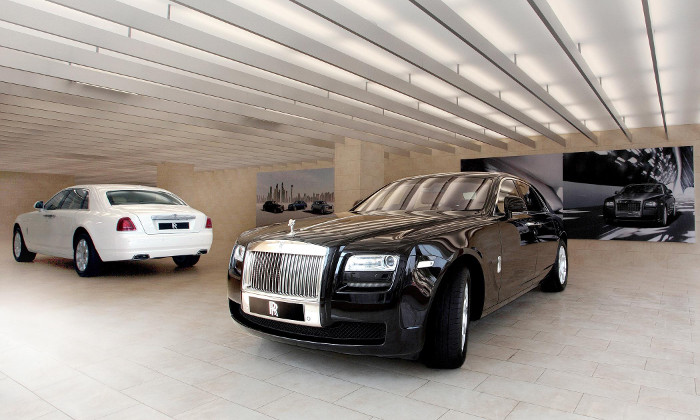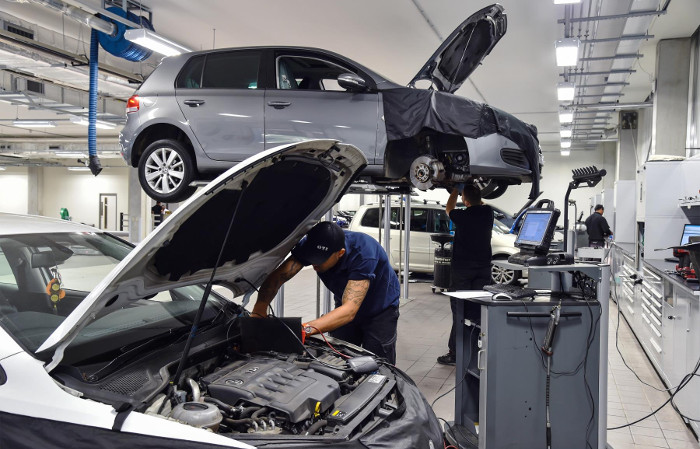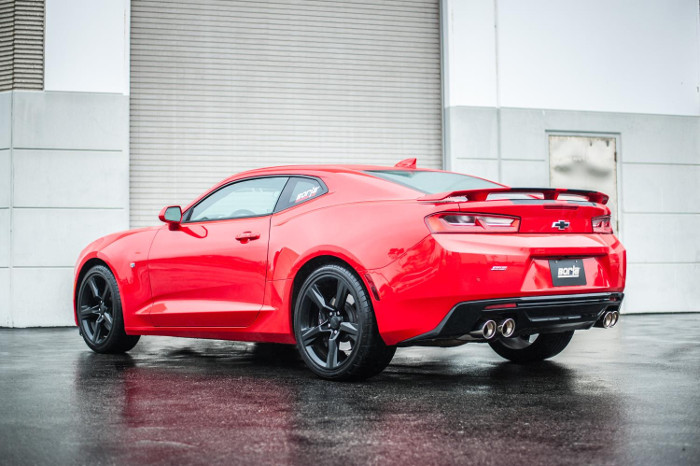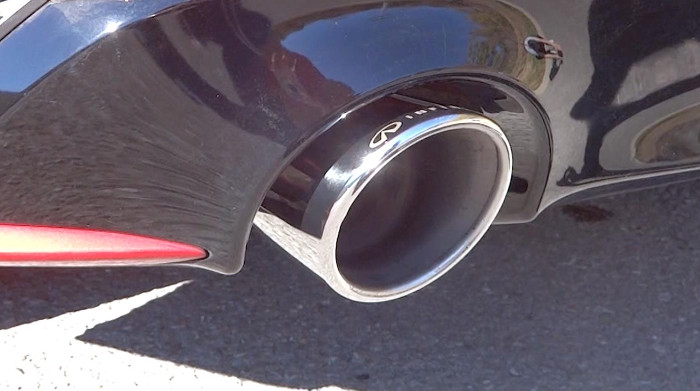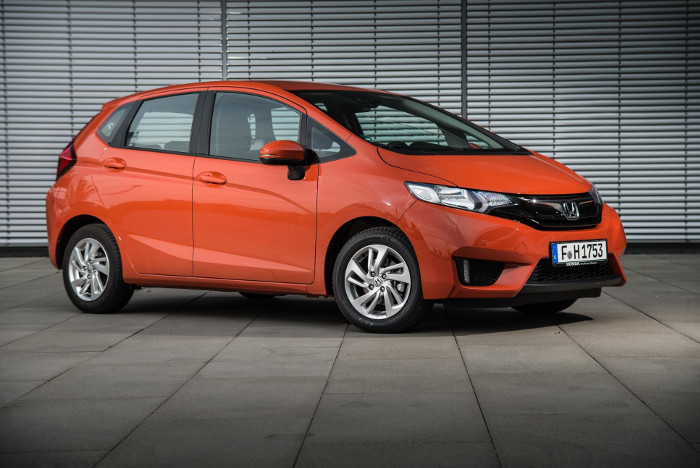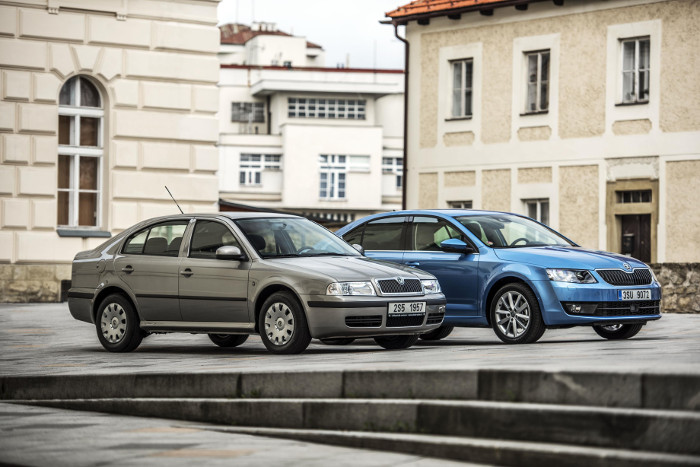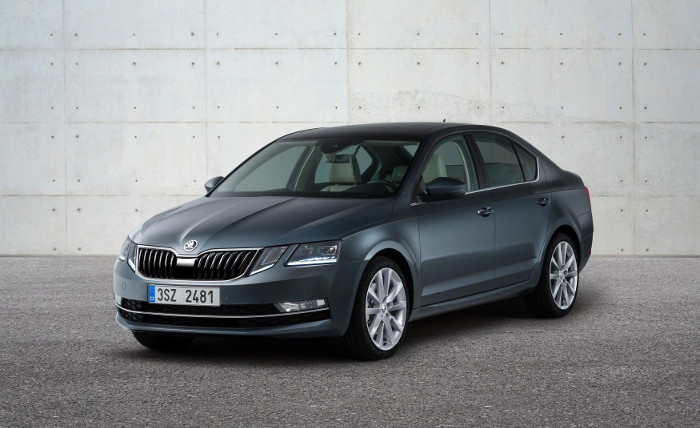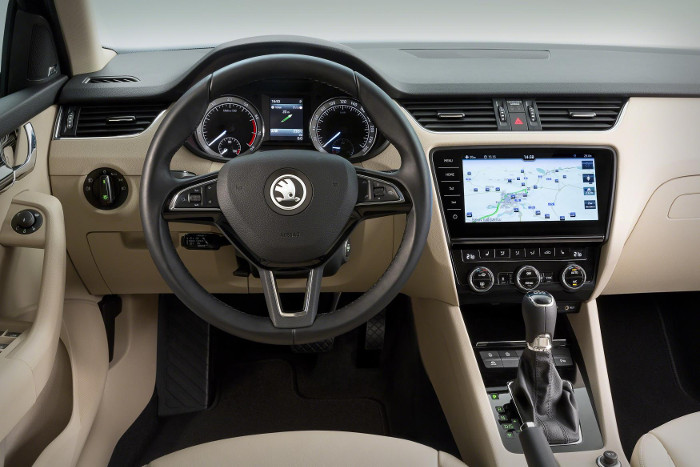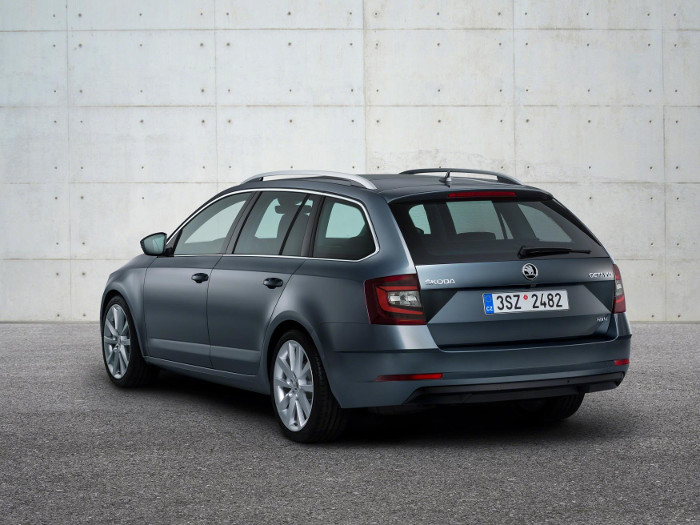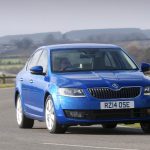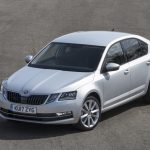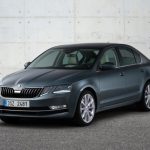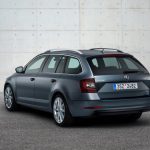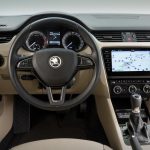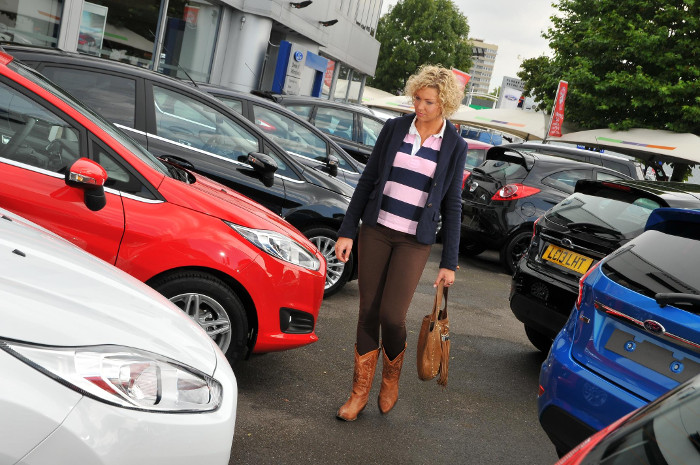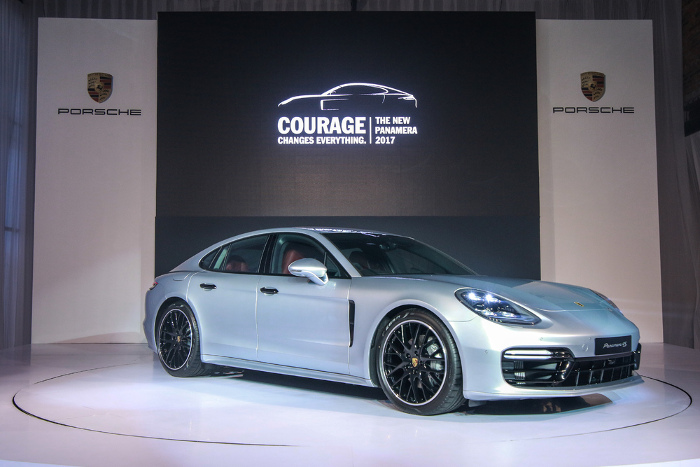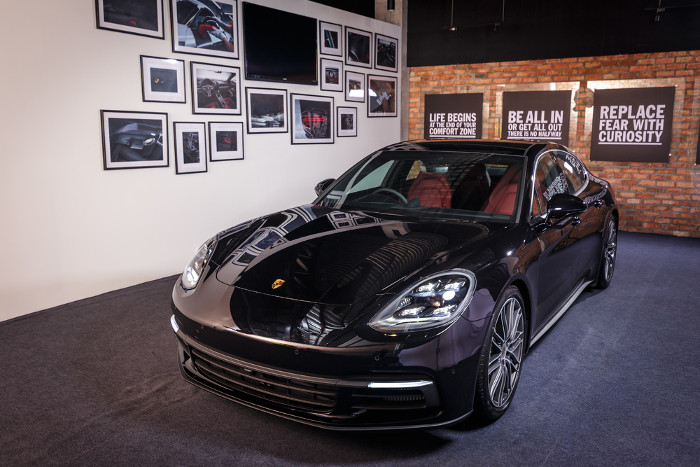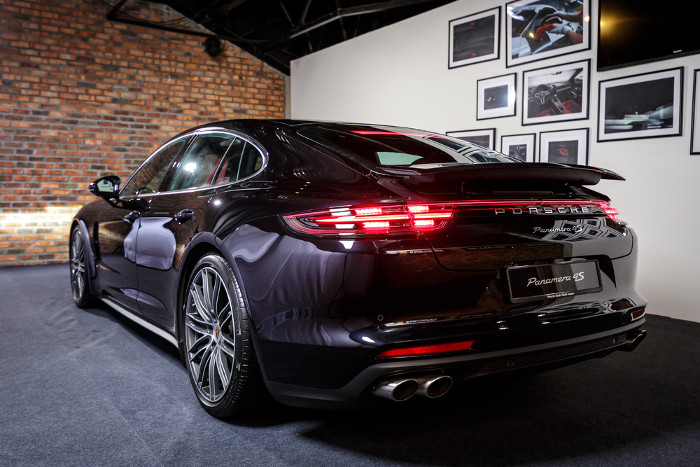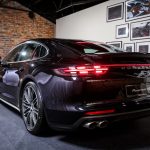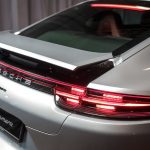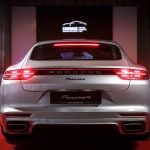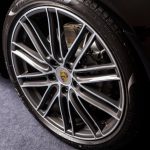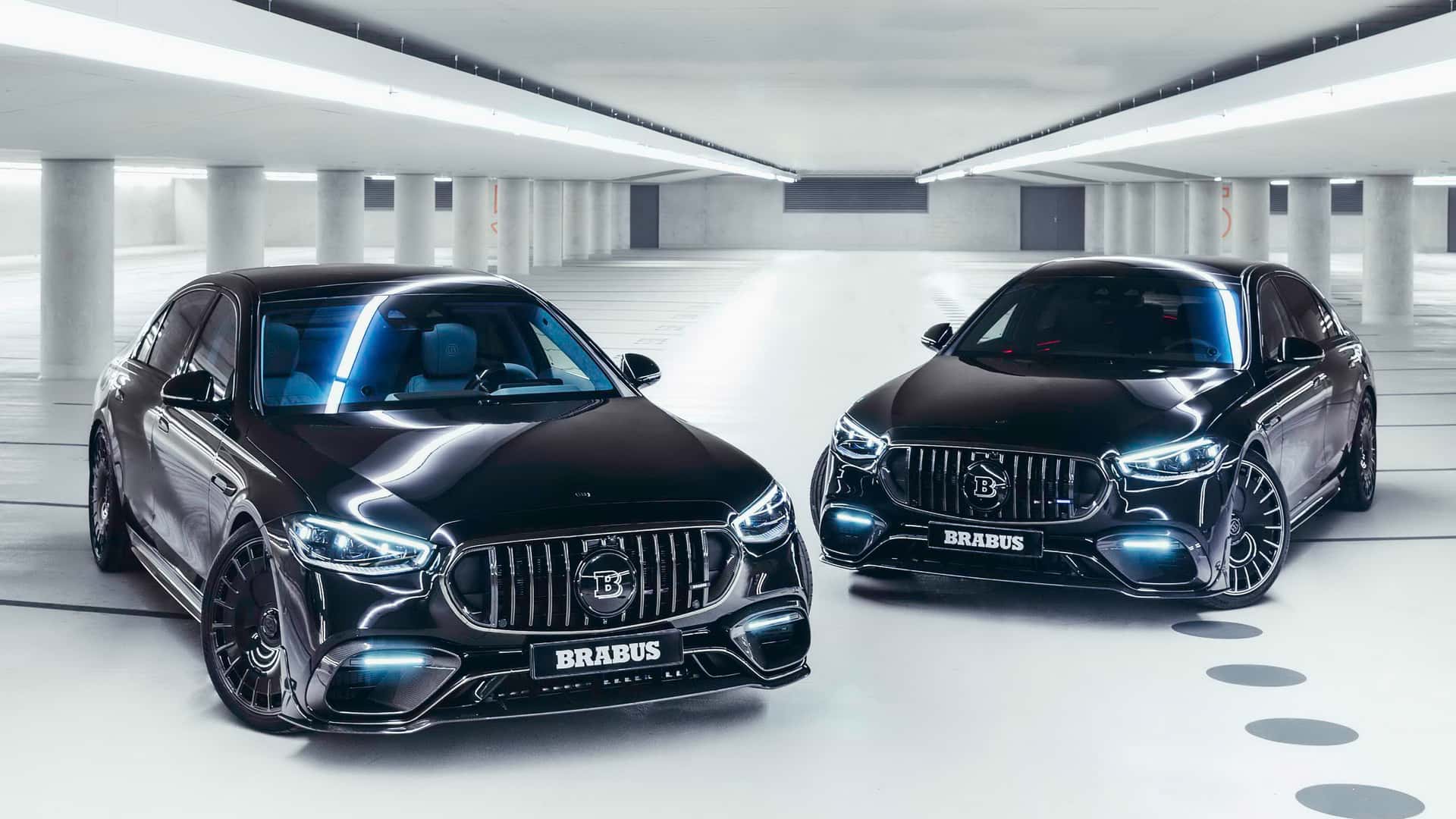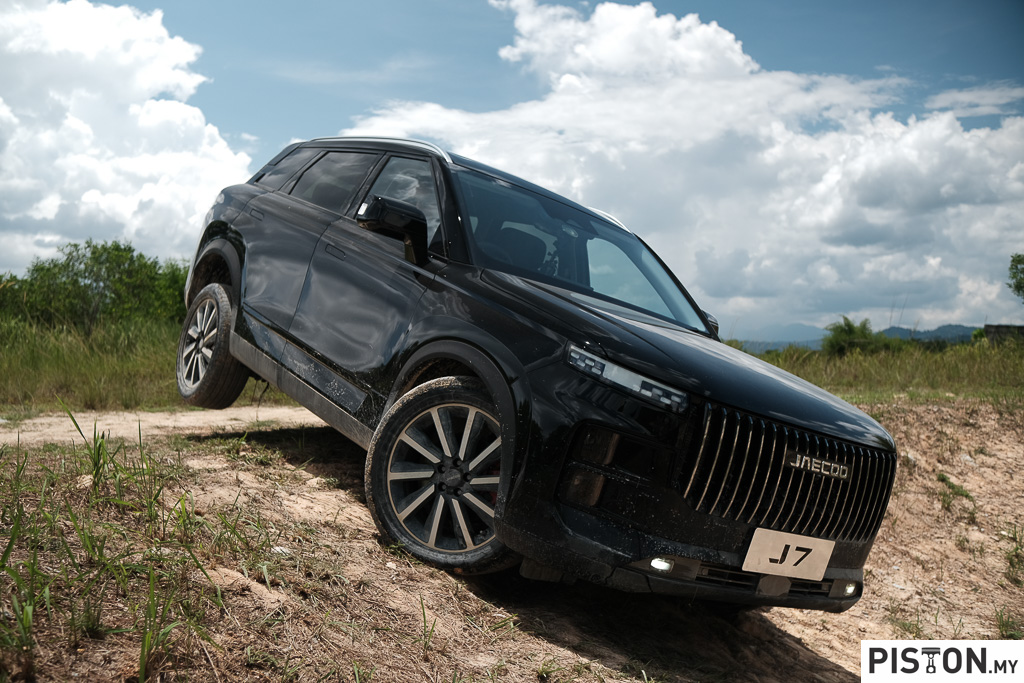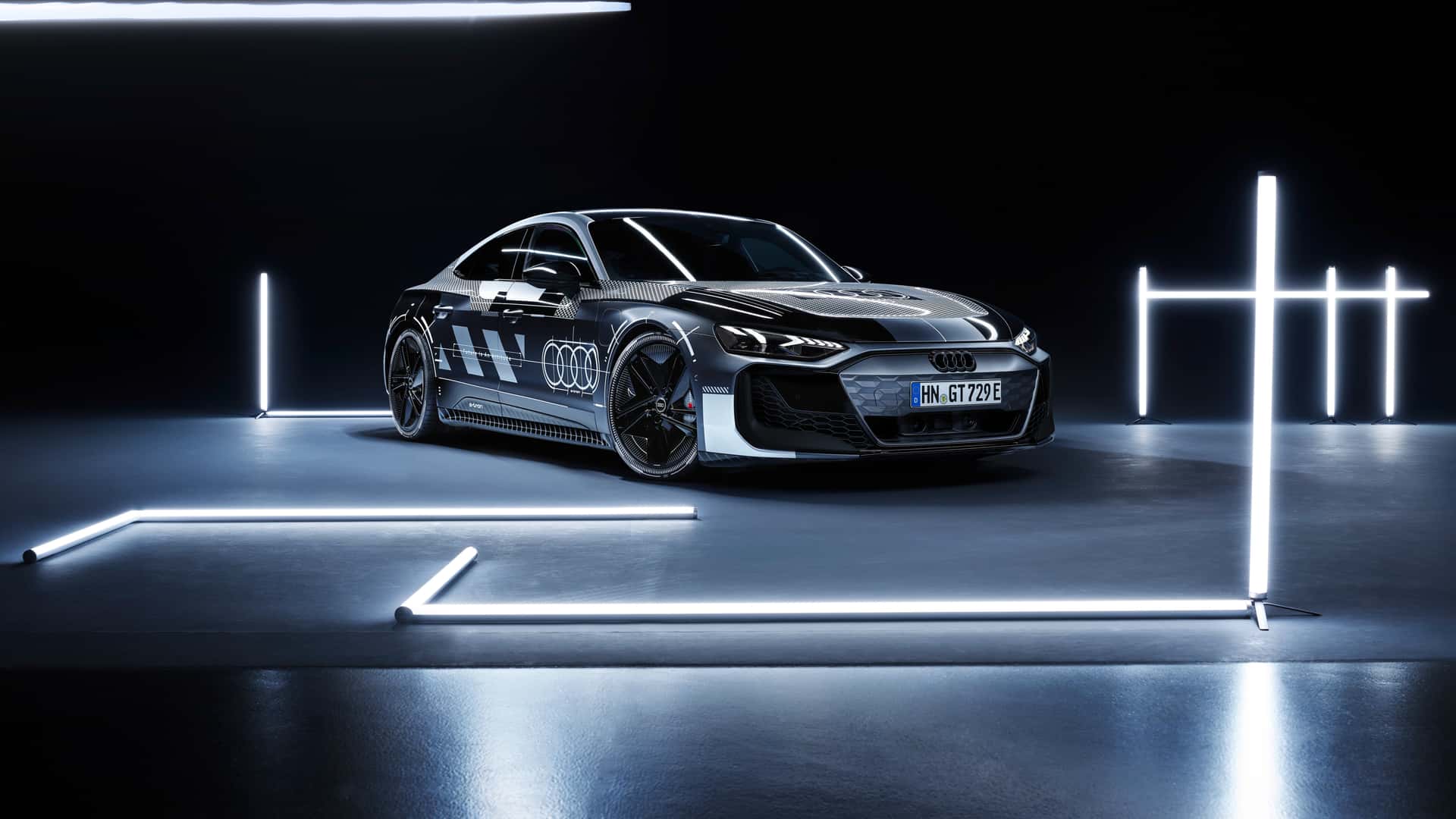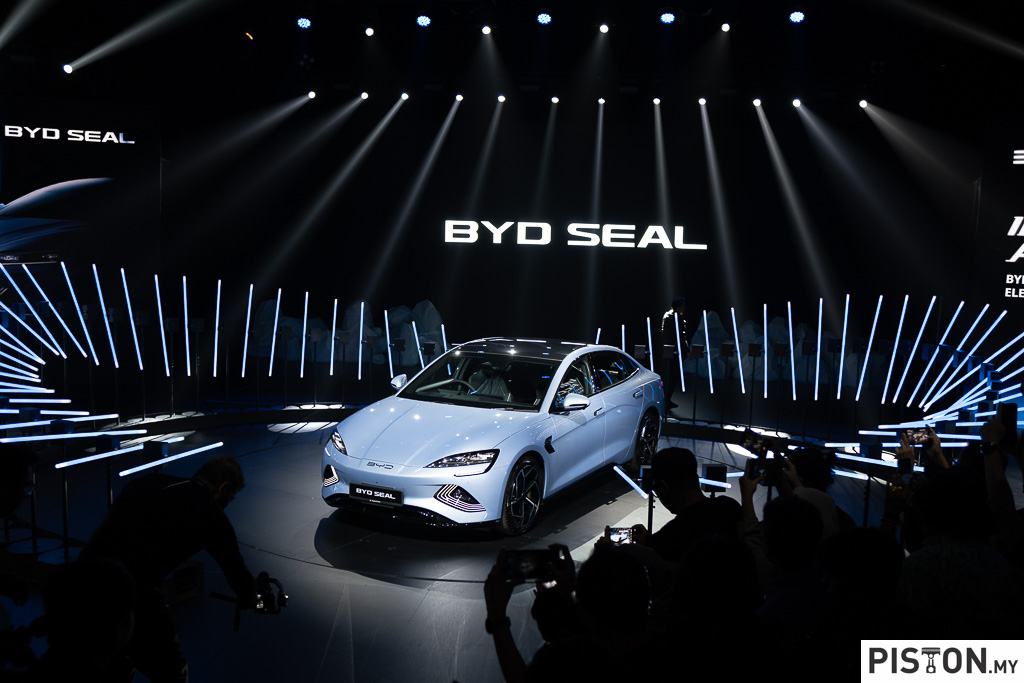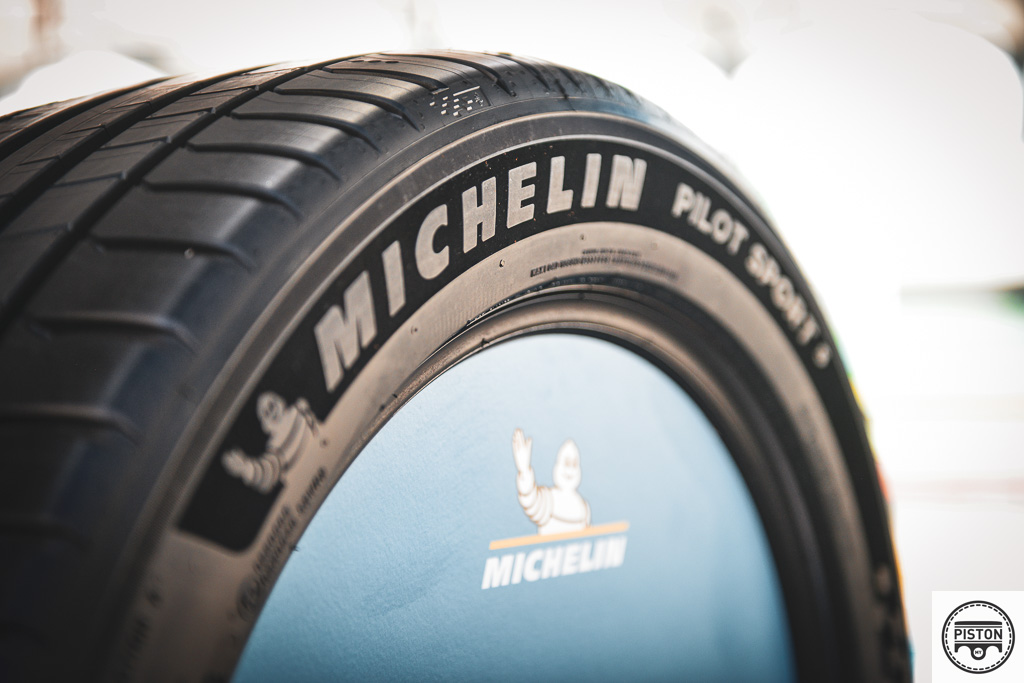Honda USA has just revealed what the upcoming 10th generation Accord will look like. Sporting a completely new look, the car is lower, wider and has a shorter length. It is said to have a lighter and more rigid body structure featuring an advanced new chassis design as well as two all-new turbo engines.
The signature chrome grille stretches across the entire front end and is flanked by the sophisticated 9-lamp LED headlights system. The front bumper has a two piece design with the blackened centre portion being integrated with the grille assembly. The contours provide the car with a muscular presence while the roof features a sleek and fluidic silhouette that tapers off toward the rear end.
The shorter overhangs, 10mm lower centre of gravity as well as the long and low hood give the entire design a more sporty look especially when viewing the car from the side. This should be to the liking of those who want a D-segment car but with the looks that allow it to fit in just about anywhere.
Like The Honda Civic, the Accord features angular rear taillights but features a broader and more grown up asthetic. Unlike the previous generation one, the new Accord has a hatchback design for the rear, which should help increase cargo carrying capacity.
Honda constructed the new Accord using the Advanced Compatibility Engineering body structure that has a crash stroke front frame and tailor-tempered rear frame members that will improve crash energy absorption. The extensive use of adhesives for the car’s bodywork is to increase rigidity, noise and weight reduction.
Speaking of the new car, Jeff Conrad, senior vice president of the Automobile Division of American Honda Motor Co., Inc, said, “We are redefining the Honda Accord for a new generation of buyers by bringing something unexpected that challenges the idea of what a mainstream sedan can. Even as we advance core values like great driving dynamics, safety performance and efficiency, the distinctive design of this all-new 2018 Honda Accord will help it appeal to both head and heart in equal measure.”
There are two engines to choose from, the first, a 1.5-litre turbo that can be mated to either a CVT or 6-speed manual, produces 192bhp and 260Nm of torque. The 2.0-litre turbo engine, produces 252bhp and is similar to what powers the Civic Type R. This particular engine replaces the 3.5-litre normally aspirated V6 in the previous generation Accord.
This 2.0-litre powerplant is mated to a 10-speed automatic transmission, which Honda boasts takes greater advantage of available torque while maximizing quietness and efficiency during highway cruising. The hybrid variant gets two electric motors that aids a 2.0-litre Atkinson cycle engine deliver fuel sipping driving behaviour. These motors utilize magnets that have no heavy rare-earth metals in them, which is a first in the industry.
Inside the cabin, occupants are treated to a panoramic front view thanks to the spacious construction of the A-pillars. The upholstery is tastefully done, complete with well crafted arm rests. Buttons and switches are arranged in a rather neat manner, which is what we have come to expect from automakers like Honda. It has even gone on to say that the meticulous attention to detail on their part has aided the switchgear throughout the cabin, to have the required tactile and visual quality feel.
The instrument cluster is made up of a slim 7-inch TFT display that is complemented by a new 8-inch touchscreen infotainment system that offers physical volume and tuning knobs. These are welcomed additions considering how cumbersome it can be to turn down the audio volume on a conventional fully touchscreen system.
As far as safety tech is concerned, the new Accord comes with Honda Sensing® safety and driver-assistive technologies as standard. It comprises of the Collision Mitigation Braking System, Lane Departure Warning, Road Departure Mitigation, Adaptive Cruise Control with Low-Speed Follow and new Traffic Sign Recognition.
Additional available driver-assistive technologies include Blind Spot Information, front and rear parking sensors, Cross Traffic Monitor and Driver Awareness Monitor. All variants feature a Multi-Angle Rearview Camera with dynamic guidelines.
Then, there’s the standard stuff that comes with most Honda cars these days, which are Vehicle Stability Assist with Traction Control, Anti-lock brakes with Electronic Brake Distribution, Tyre Pressure Monitoring System (TPMS), advanced front airbags, driver and front-passenger side airbags and new driver and front-passenger knee airbags.
Over here in Malaysia, we wait with baited breathe for the launch of this new Accord. It may take a while before we hear any news about its local launch, but we are still hoping that Honda hastens the process.


